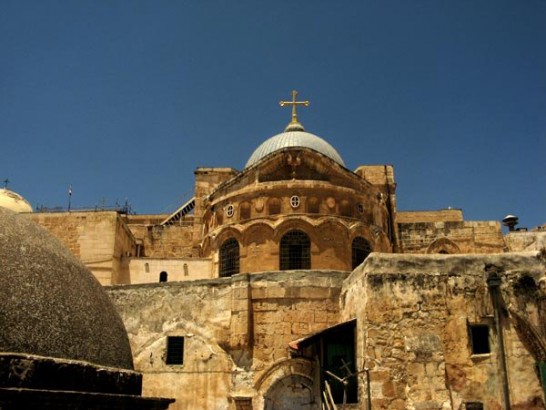Israel Travel: 5 Highlights of touring the Holy Land
mis à jour le 7 October 2015 à 00:02
It is close to impossible to explore the Holy Land without falling to a dozen of tourist traps disguised as pilgrimage sites. Yet, few sites still preserve authenticity, and are very well worth a visit. Here's our guide.
The Garden Tomb
While the historical and geographical accuracy of The Church of the Holy Sepulchre as the tomb of Jesus is challenged by scholars, The Garden Tomb, outside Jerusalem, remains quite, peaceful, and rather uneventful. Pilgrims are regulated to follow an on-site, well-trained tour leader who will always underlines that this garden is just probably the most archaeologically and geographically accurate location of the tomb of Jesus. The point is not whether it’s true or not. There is no church building here. There are no bottles of holy water on sale as the cure for your grandmother’s alzheimer. Just a beautifully nurtured and manicured garden with benches and corners for small praying groups. Noise is kept to minimum. On the walk outside, there is a shop that sells handicrafts, and they are definitely not the ones usually found in Via Dolorosa. More information can be found at www.gardentomb.com
Nazareth Village
The hometown of Jesus is now a well-preserved tourist attraction that focuses on presenting how life in a farm was in the first century. In short, what kind of environment where Jesus was raised as a little kid. Bible geeks will rejoice because this model village will make them not just understand completely, but also experience the meaning of Jesus’s famous parables that are drawn from the lifestyle in such setting. Learn how to be a shepherd, or run a mill, for instance. Nazareth Village is run by a non-profit organization. Souvenir shop includes the organic herbs and ingredients they produce on site to bring to our kitchen. More information can be found at: www.nazarethvillage.com
Dome of the Rock
Nobody wants to miss this heart of the three major religions – Christianity, Islam and Judaism – that rests in the very centre of the old city of Jerusalem. The dazzling golden dome sits atop of a heavily ornamented Islamic architecture. Rules and regulations for a visit cannot be more strict. Non-Muslims are permitted access as long as they do not carry any form of religious artifact or anything with Hebrew letters. Meanwhile, Israeli police also ensures that only Palestinian residents of the West Bank can access The Dome when open on Muslim holidays, and if they are 35 years old and above. Non-Muslims may not enter The Dome during prayer time, and on Muslim holidays. If you are not with a tour group, schedule the visit carefully. It’s an awesome view.
The Church of All Nations
While many other Bible-related sites have been claimed by the evangelical Christians, the Roman Catholic Church, or other parties, The Church of All Nations – where a section of the bedrock on which Jesus prayed the night before he was captured by the Roman soldiers – belong practically to all denominations of Christianity. The main chapel was a result of donations from Argentina, Brazil, Chile, Mexico, Italy, France, Spain, United Kingdom, Belgium, Canada, Germany, and USA. Meanwhile, Ireland, Hungary, and Poland donate the mosaics, and Australia crown the bedrock. The result? A stunning and gorgeous architecture on the Mount of Olives outside Jerusalem, overlooking the Dome of the Rock in a far distance.
The Dead Sea
Alright, this might not mean much in a pilgrimage, but floating while reading a newspaper in a sea? Having a mud scrub under a scorching 45 Celsius degree sun? Passing the Zero Meter (Sea Level) sign while driving on a highway just outside Jerusalem? That will make a story, and bring hundreds of likes on Instagram.
Ve Handojo
Photos: Ve Handojo



